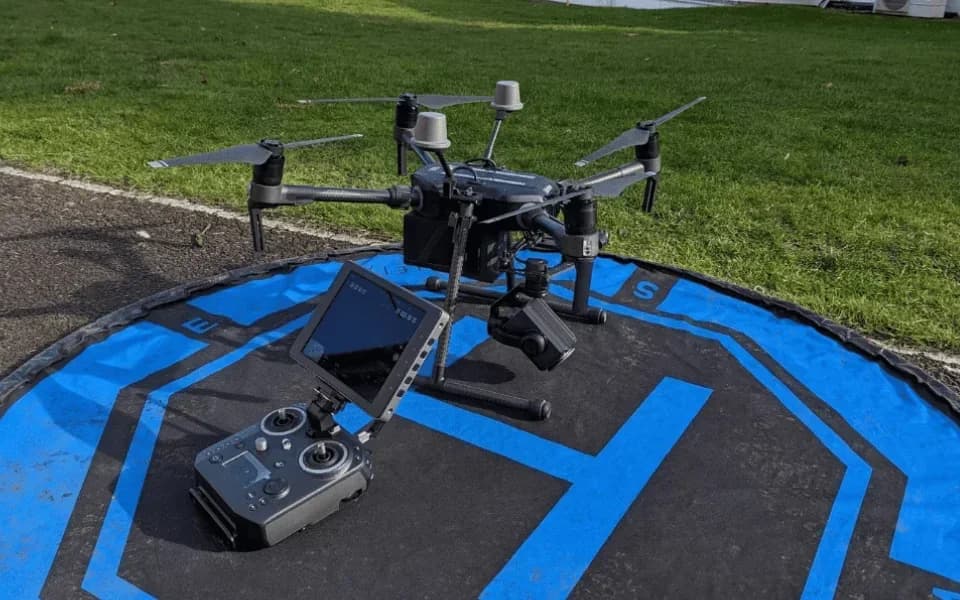
When you fly your drone, you're relying on its compass to keep a steady heading. This small magnetic sensor constantly tells your drone which way is north, ensuring it flies straight and navigates correctly.
While its purpose seems simple, how it actually functions and what you must do to protect its accuracy are more complex subjects.

30 Second Summary
- A drone compass is a magnetic sensor that determines the drone's heading and orientation relative to magnetic north.
- It provides the drone with an internal sense of direction, crucial for stable flight and accurate navigation.
- The compass works with GPS to calculate a true heading, allowing the drone to fly a straight path in wind.
- Calibration is required before flight to orient the sensor to the Earth's magnetic field and ensure accuracy.
- Electromagnetic interference from metal or power lines can disrupt the compass, leading to navigation failure.
What is drone Compass
A drone compass is a magnetic sensor, or 3-axis magnetometer, that measures the Earth's magnetic field to determine your drone's heading and orientation relative to magnetic north. You'll find this critical navigation component is built directly into your drone's flight controller.
It isn’t a single sensor; instead, it's composed of three independent sensors working together. Each of these sensors is meticulously aligned with one of your drone's principal axes: the x, y, and z axes.
This precise alignment is fundamental to its purpose. Each sensor has the specific job of measuring the magnetic field components that run parallel to its assigned axis. By gathering data from these three distinct directions, your drone’s systems receive the raw information needed to establish its bearing.
It’s the foundational navigational tool that gives your drone an accurate sense of direction, which is essential for stable flight and predictable control.

How A Drone Compasss Works
Your drone's compass works by measuring the local magnetic field, a vector quantity described by its strength and direction. It doesn't operate in a vacuum, though.
Your flight controller constantly combines this magnetic sensor data with your drone's real-time GPS position information. This fusion of data is the essential first step that allows your drone to precisely determine its heading anywhere on Earth, correcting for geographic variations in the magnetic field.
Using this combined data, your flight controller accesses a stored global magnetic field model. It references this model to calculate the magnetic declination, which is the local difference between magnetic north and true north for your current position. The controller then adds this declination value to the compass’s magnetic heading measurement.
This crucial calculation gives your drone its true heading. This sensor works alongside other systems, like the IMU and GNSS receiver, to enable accurate flight control.

Purpose and Function Of Drone Compass
Because it provides essential information about your drone's heading, the compass is crucial for accurate navigation and maintaining a stable flight path. Think of it as your drone's internal sense of direction.
When you're flying in GPS-supported modes, you'll notice the compass works tirelessly to keep your drone on course. It constantly compensates for any position changes that wind might cause.
This specific function is how your drone successfully maintains a straight-line flight, even on a breezy day, instead of getting pushed off its intended path.
Without this vital component functioning correctly, you'll quickly encounter problems. Your drone will struggle to fly straight, which directly leads to navigation errors. You could also experience sudden, unexpected changes in its heading, making it extremely difficult to control.
The compass ensures your drone knows which way it's pointing and which way it needs to go, giving you reliable performance.
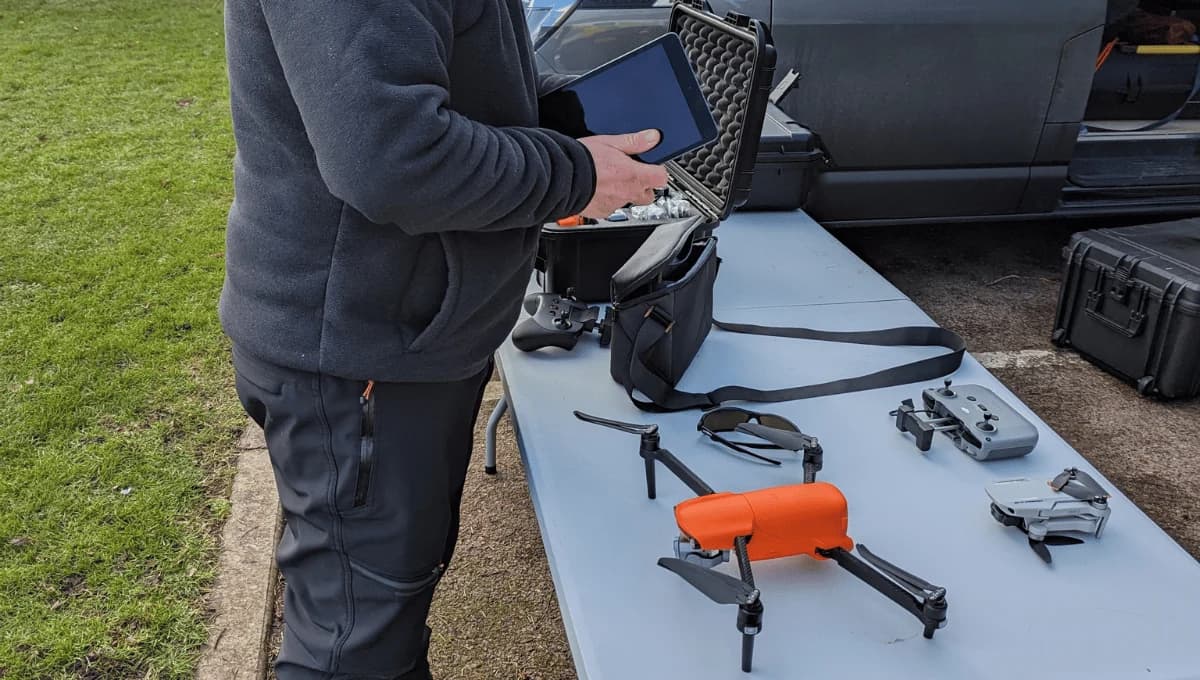
Drone Compass Calibration and Interference
To ensure your drone's compass works correctly, you'll need to calibrate it before flying by rotating the drone horizontally and then vertically in a figure-eight pattern. This essential process, often called the “compass dance,” allows your device to orient itself to the Earth's magnetic field at your specific location.
If you skip this step or perform an improper calibration, you’ll notice serious issues. Your drone will exhibit unstable flight, drift off course unexpectedly, or provide you with inaccurate control responses, making a safe flight nearly impossible.
You must also remain aware of electromagnetic interference, which can seriously affect your compass. Flying your drone too close to sources like high-voltage power lines or large metal structures disturbs its magnetic readings. This interference directly and negatively impacts your drone’s navigation.
As a result, critical GPS-supported modes, like Return to Home, may not function safely, and your drone could lose its positioning entirely, putting your investment at severe risk.
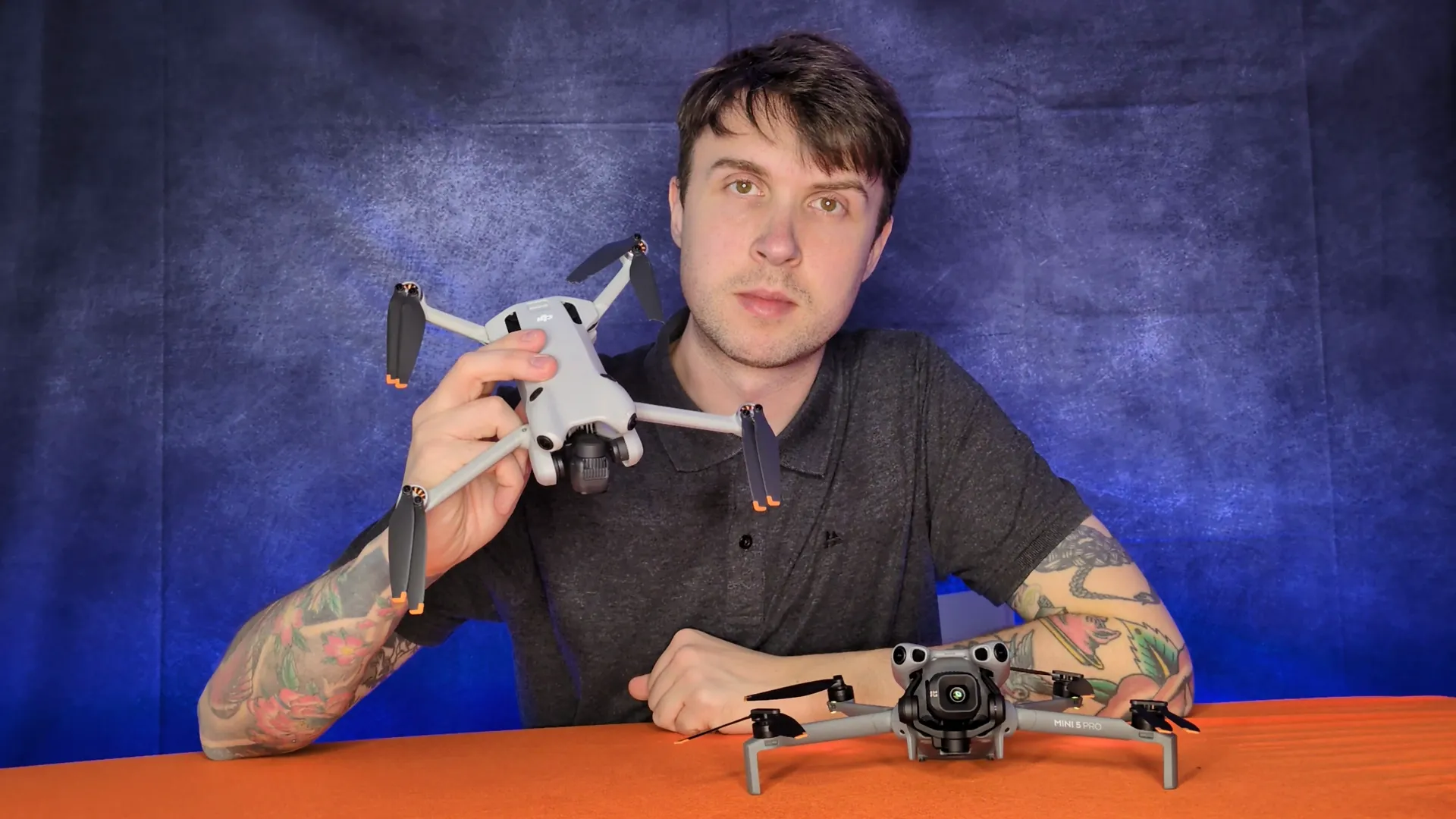
How To Calibrate Your Drones Compass
Before calibrating your DJI drone's compass, ensure the battery level is at least 50%, unfold the aircraft arms, and go to an open outdoor location away from strong magnetic fields or large metal objects such as electrical equipment, parking lots, ships, or buildings with underground steel columns. Remove any watches or jewelry, as metal can interfere with the calibration process.
Step-by-Step Calibration Process
For DJI Neo, Mini Series, Mavic 3/4 Series, Air Series, and Flip:
Power on your drone and remote controller, then connect your smartphone to the controller.
Open the DJI Fly app and enter the flight interface.
Tap the three dots (···) in the top right corner, then navigate to Safety > Sensors > Compass > Calibration.
Tap "Calibration" and follow the on-screen instructions.
Physical Drone Calibration Movements
Horizontal Rotation: Hold the drone level and horizontally, then slowly rotate it 360 degrees around its vertical axis. The lights below the propellers will flash and turn green or yellow when this stage is complete.
Vertical Rotation: Point the nose of the drone straight down (flip it on its side vertically), then rotate it smoothly and steadily another full 360 degrees. When completed successfully, you'll see confirmation on screen and the rear lights will flash green.
Troubleshooting Failed Drone Compass Calibration
If calibration fails, restart the aircraft and repeat the steps above. If you receive a "Compass Interference" alert after calibration, move to a cleaner environment away from magnetic interference and re-attempt the process.
Never ignore compass calibration warnings, as they protect the integrity of your flight path. If the issue persists after multiple attempts, contact DJI for testing and repair.
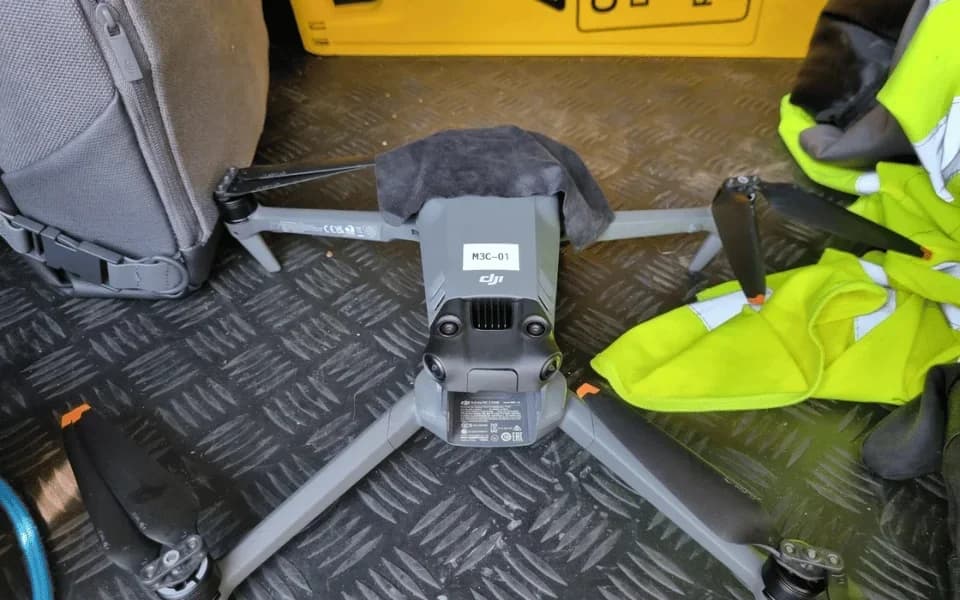
Frequently Asked Questions
Can I Fly My Drone Without a Compass?
Yes, you can fly your drone without a compass, but you’ll lose critical features. Your drone won't know its heading, so GPS-assisted modes like Return-to-Home and position hold won't work.
You’re restricted to flying in Attitude (ATTI) or a fully manual mode. In these modes, you must constantly make corrections to control the drone’s orientation and prevent it from drifting, which demands significantly more drone piloting skill from you.
What Happens if the Compass Fails Mid-Flight?
If your compass fails mid-flight, your drone immediately loses its sense of direction. It won't know which way it's facing, making GPS-assisted modes like Return to Home unreliable or completely fail.
You'll likely see it drift or fly erratically in a “toilet bowl” effect. The drone will probably switch to a manual mode (like ATTI), forcing you to rely entirely on line-of-sight and your drone piloting skills to bring it home safely.
Do All Modern Drones Have a Compass?
You'll find that nearly all modern consumer and photography drones have a compass. However, you generally won't find one in high-performance FPV racing drones or simple toy models. These types of drones prioritize pure manual control and agility.
Since automated features like GPS position hold and Return to Home rely on knowing the drone's orientation, you can assume any GPS-equipped drone you fly also has a compass to provide that critical heading data.
Can I Upgrade or Replace My Drone's Compass?
You can replace your drone's compass, though upgrading is uncommon for most consumer models. It's often integrated into the GPS module, so you'd swap the entire unit as one part.
You'll need to find a replacement component that's specifically compatible with your drone's make and model. For many drones, it's a simple plug-and-play repair, but some custom builds might require soldering. Remember, you must perform a full compass calibration after you install it.

Does Extreme Temperature Affect Compass Accuracy?
Yes, extreme temperatures affect your compass's accuracy. Both intense heat and severe cold interfere with the magnetometer's sensitive electronics.
You'll find high heat creates electrical noise, causing erratic readings, while extreme cold can slow the sensor's response or make it fail. This is why you must operate your drone within its recommended temperature range. Flying outside these limits risks navigational errors, which could lead to instability, drifting, or even a flyaway.
Secure Mission Success with Expert UK Drone Operators
Understanding and managing a drone's compass is non-negotiable for accurate navigation. Proper calibration and avoiding electromagnetic interference are critical to prevent flight errors and ensure mission safety. When navigational failures due to compass issues jeopardise projects, HireDronePilot provides the solution by connecting you with professionals who have mastered these technical pre-flight requirements.
Our network of pilots holds the necessary certifications and experience to conduct thorough compass calibrations and assess flight environments for potential magnetic interference, guaranteeing precision. As the UK's premier managed marketplace, HireDronePilot specialises in connecting businesses with verified professional drone operators for hire. We streamline drone services through competitive bidding, ensuring quality, compliance, and value for every aerial project across the United Kingdom.
For reliable and precise professional drone services, trust our network of vetted experts.
Don't let a simple sensor compromise your complex project. Hire a certified UK drone operator today and ensure flawless navigation from takeoff to landing.
About the Author

Written by
Peter Leslie
Peter Leslie is a CAA-approved commercial drone pilot with 10+ years experience and over 10,000 flight hours. He holds the GVC and A2 CofC drone licences with full CAA Operational Authorisation. Peter is a member of ARPAS-UK, the UK's non-profit trade association for the drone industry. He founded HireDronePilot to connect UK businesses with qualified, insured drone operators.
Looking for More Drone Work?
Join the UK's leading network of professional drone pilots and grow your business.
Open Access
Bid on any job - all jobs open to all pilots
Grow Revenue
Access high-value commercial projects
Stay Busy
Fill your schedule with regular work
Related Articles

Our Drone Survey Service In Stirling, Scotland
Bringing you Stirling drone survey data from areas no one else can fly.

How Much Does A Drone LiDAR Survey Cost
Forecasting your drone LiDAR survey cost requires understanding what's hidden beyond the initial quote.
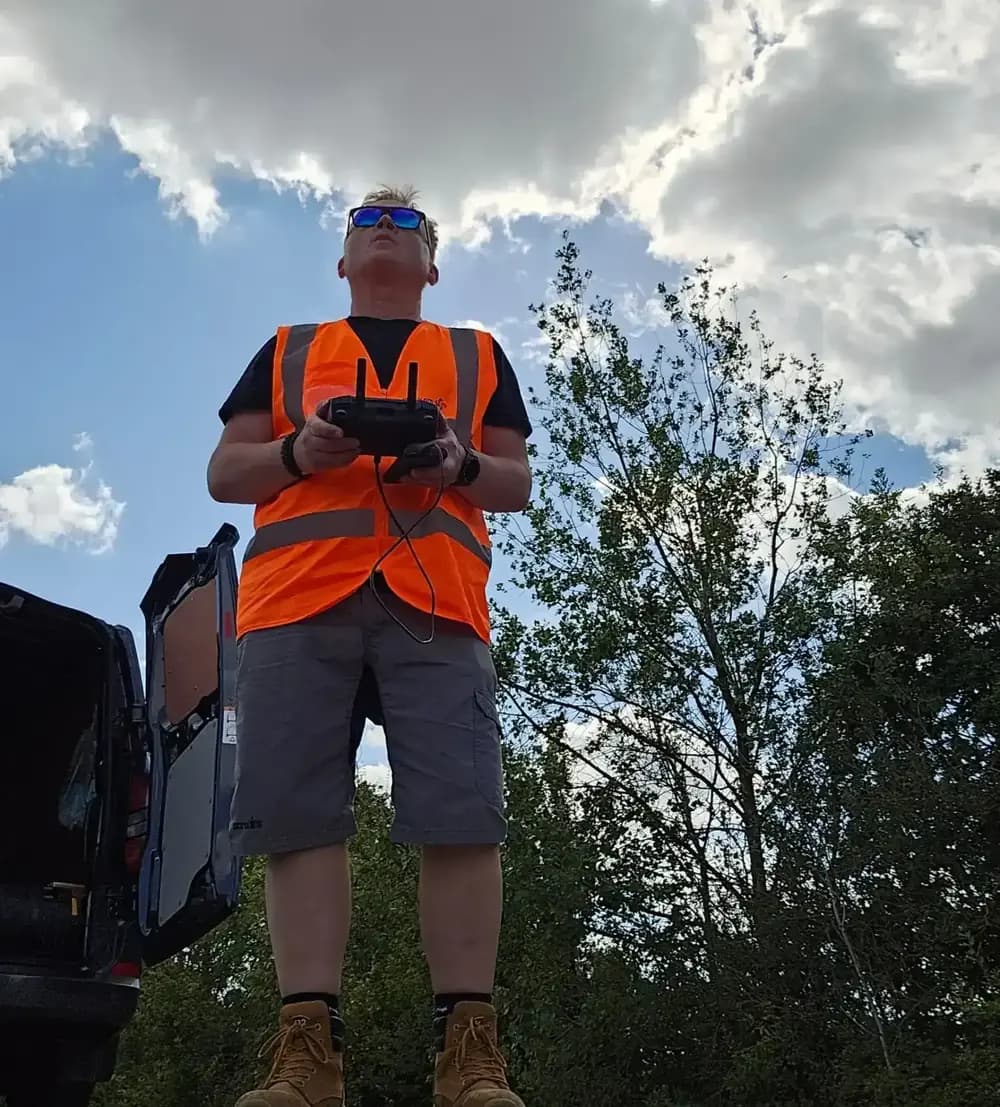
Step By Step Process Of Drone LiDAR Survey
Next, discover the crucial post-flight steps that determine your survey's success.
